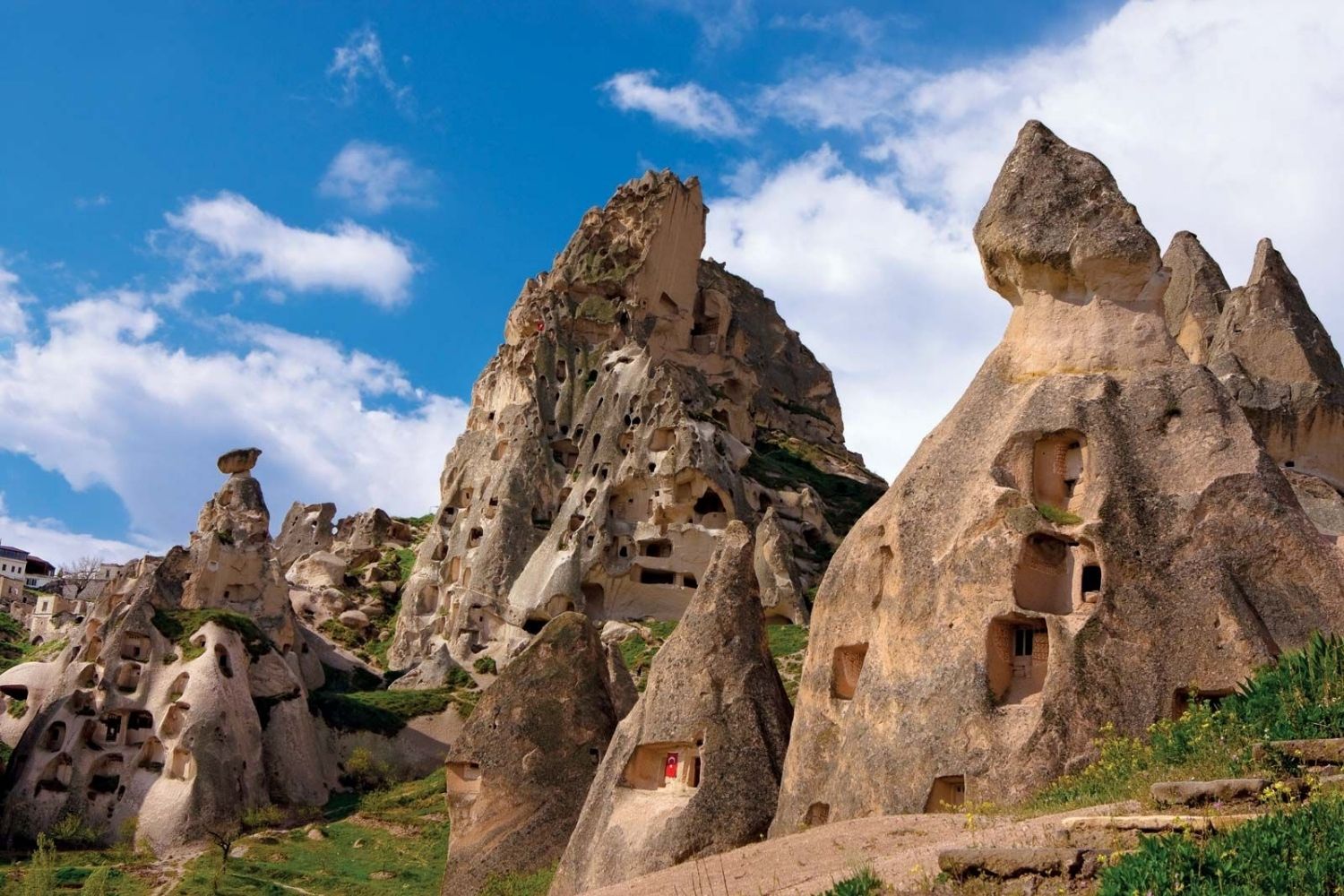
Southeastern Anatolia is a region brimming with history, culture, and natural beauty. Nestled in Turkey, this area offers a unique blend of ancient civilizations and modern life. Ever wondered what makes this place so special? Southeastern Anatolia is home to some of the world's oldest temples, bustling bazaars, and mouth-watering cuisine. From the mystical city of Göbekli Tepe to the vibrant streets of Gaziantep, there's something for everyone. Whether you're a history buff, a foodie, or an adventurer, this region has countless stories to tell. Ready to dive into 28 fascinating facts about Southeastern Anatolia? Let's get started!
Key Takeaways:
- Southeastern Anatolia is a treasure trove of ancient civilizations, natural wonders, and rich cultural traditions, making it a fascinating region to explore and learn about.
- From the world's oldest temple to modern advancements like the GAP Project, Southeastern Anatolia offers a unique blend of history, nature, and innovation, making it a region of endless discovery and diversity.
Southeastern Anatolia: A Region Rich in History and Culture
Southeastern Anatolia, located in Turkey, is a region brimming with history, culture, and natural beauty. This area has been a crossroads of civilizations for thousands of years. Let's dive into some fascinating facts about this unique region.
Ancient Civilizations
Southeastern Anatolia has been home to numerous ancient civilizations. Here are some intriguing details about its historical significance.
- Göbekli Tepe: This archaeological site is considered the world's oldest temple, dating back to around 9600 BCE.
- Mesopotamia: Often referred to as the "Cradle of Civilization," this region includes parts of Southeastern Anatolia.
- Hittites: An ancient Anatolian people who established an empire in the region around 1600 BCE.
- Assyrians: This ancient civilization had a significant presence in Southeastern Anatolia, particularly in the city of Diyarbakır.
- Urartu: An ancient kingdom that existed in the region during the Iron Age.
Natural Wonders
The region is not just about history; it also boasts stunning natural landscapes.
- Mount Nemrut: Famous for its giant statues and the tomb of King Antiochus I, this mountain offers breathtaking views.
- Tigris River: One of the most important rivers in the region, it has been a lifeline for civilizations for millennia.
- Harran: Known for its beehive-shaped houses, this ancient city is surrounded by beautiful plains.
- Karaca Cave: A stunning cave system with impressive stalactites and stalagmites.
- Lake Hazar: A picturesque lake that is also the source of the Tigris River.
Cultural Heritage
The cultural richness of Southeastern Anatolia is evident in its traditions, cuisine, and festivals.
- Diyarbakır Fortress: This ancient fortress is a UNESCO World Heritage Site.
- Mardin: A city known for its unique architecture and cultural diversity.
- Şanlıurfa: Often called the "City of Prophets," it is believed to be the birthplace of Abraham.
- Gaziantep Cuisine: Famous for its delicious baklava and kebabs.
- Kilis: Known for its vineyards and traditional wine-making.
Modern Developments
Southeastern Anatolia is also a region of modern advancements and projects.
- GAP Project: The Southeastern Anatolia Project aims to improve the region's economy through irrigation and hydroelectric power.
- Atatürk Dam: One of the largest dams in the world, providing water and electricity to the region.
- Şanlıurfa Archaeology Museum: Home to artifacts from Göbekli Tepe and other ancient sites.
- Diyarbakır Airport: A modern airport connecting the region to the rest of Turkey and beyond.
- Gaziantep University: A leading educational institution in the region.
Unique Traditions
The traditions of Southeastern Anatolia are as diverse as its history.
- Kilim Weaving: A traditional craft passed down through generations.
- Halay Dance: A traditional folk dance performed at celebrations.
- Sıra Gecesi: A cultural night of music, dance, and food, particularly popular in Şanlıurfa.
- Ebru Art: Also known as marbling, this art form involves creating patterns on water and transferring them to paper.
- Traditional Music: Instruments like the saz and darbuka are commonly used in regional music.
Wildlife and Nature Reserves
The region is also home to diverse wildlife and protected areas.
- Birecik Bald Ibis Sanctuary: A protected area for the endangered bald ibis.
- Dicle Valley: A natural reserve known for its rich biodiversity.
- Ceylanpınar State Farm: One of the largest agricultural enterprises in Turkey, also a habitat for various wildlife species.
Final Glimpse at Southeastern Anatolia
Southeastern Anatolia offers a rich tapestry of history, culture, and natural beauty. From the ancient city of Göbekli Tepe to the stunning landscapes of Mount Nemrut, this region is a treasure trove of fascinating sites. The unique blend of cultures, languages, and traditions makes it a captivating destination for travelers and history buffs alike.
The region's culinary delights, like kebabs and baklava, are a treat for the taste buds. The warm hospitality of the locals adds to the charm, making every visit memorable. Whether you're exploring ancient ruins or enjoying a traditional meal, Southeastern Anatolia promises an unforgettable experience.
So, pack your bags and get ready to discover the wonders of this incredible region. Southeastern Anatolia awaits with open arms, ready to share its stories and secrets with you.
Frequently Asked Questions
Was this page helpful?
Our commitment to delivering trustworthy and engaging content is at the heart of what we do. Each fact on our site is contributed by real users like you, bringing a wealth of diverse insights and information. To ensure the highest standards of accuracy and reliability, our dedicated editors meticulously review each submission. This process guarantees that the facts we share are not only fascinating but also credible. Trust in our commitment to quality and authenticity as you explore and learn with us.
